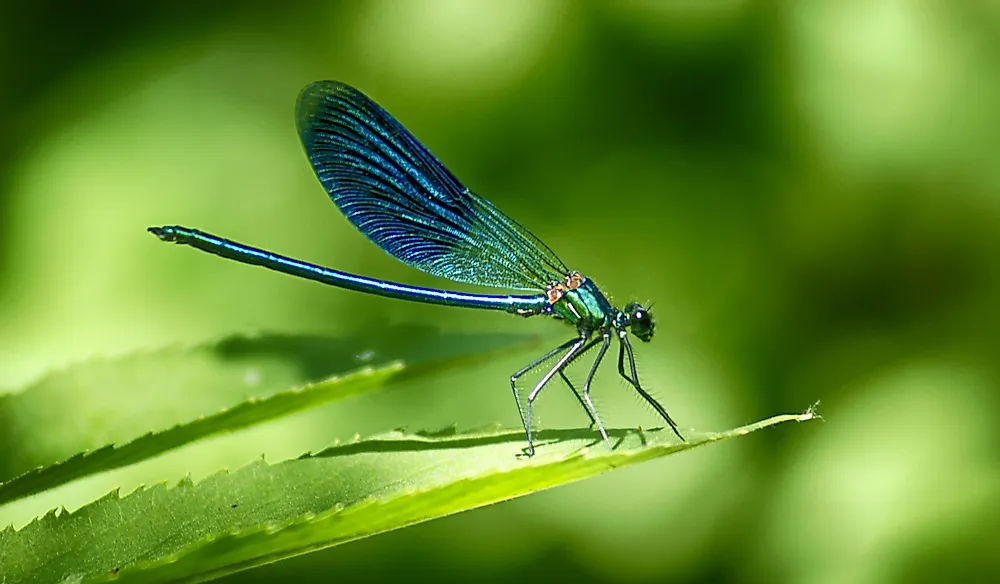What Do Dragonflies Eat?

Dragonflies are insects belonging to the order Odonata, and they are characterized by two pairs of strong wings, elongated bodies, and big multifaceted eyes. There are over 3,012 dragonfly species in the world which are classified into 348 genera in 11 families. Dragonflies can be found on all the continents on earth except Antarctica. Dragonflies resemble damselflies in structure, but they are lighter and always have their wings held away from the body and flat. Both dragonfly larvae and adults are carnivorous, mostly consuming other insects.
Description
Dragonfly is a strong-flying insect that holds its wings horizontally when at rest and in flight. The body of an adult dragonfly is divided into three segments (abdomen, thorax, and head). They have large heads with short antennas that have two compound eyes and three simple eyes. Adult dragonflies have metallic colors that make them conspicuous especially when they are flying. Their coloration is a combination of black, brown, red, and yellow pigments. Their wings are generally clear, but numerous genera have some colors on their wings. The dropwings and scarlets have bright orange patches while the groundlings have some brown bands on their wings. The nymphs of the dragonflies are a perfect blend of grey, green, and brown.
Diet
The dragonfly’s larvae are voracious predators that consume all small living things around them. The staple diet of the larvae is mainly made up of bloodworms, small fishes, tadpoles, and the larvae of other insects. The nymphs of the somber goldenring dragonflies hunt for small arthropods at night. As soon as they are mature, they crawl to the surface and molt their skin before flying.
The adult dragonflies hunt using their strong, agile flights and acute eyesight. They use the basket formed by their legs to catch their prey while flying. They are mainly carnivorous insects which feed on a wide array of insects including smaller dragonflies, damselflies, moths, butterflies, bees, butterflies, mayflies, gnats, mosquitoes, and small midges. The dragonflies subdue their large preys by biting their heads and carrying them to their perch. They discard the wings of their prey and ingest their heads first. They can consume about a fifth of their body weight every day. They are the most efficient hunters in the world that can catch over 95% of all the preys they chase.
Behavior
Most male dragonflies are territorial, and they can defend their territories against other insects including other dragonflies. A unique perch gives dragonflies a great view over an insect-rich feeding ground, and some dragonfly species like the Pachydiplax longipennis can maintain rights over a certain perch by jostling other dragonflies. The male dragonflies defend their breeding territories, particularly the ones that congregate near ponds. These territories have various unique features including a particular substrate or plant species for egg-laying, and a unique sunlit area of shallow water. The dragonflies signal ownership of their territories by striking colors on their wings, legs, abdomen, and face. The females must mate with the owner of a territory before they lay their eggs.











